5 Lessons in Design Aesthetics for Your Next Mobile Website

With more than half of the world's Internet traffic coming from mobile devices like smartphones and tablets, having a mobile-friendly website isn't an option for businesses anymore - it's a requirement.
Add this understanding to the fact that 61 percent of users are unlikely to return to a mobile website they had trouble accessing, and you know you can't progress with a clumsy design.
Luckily, designing a user-friendly website for mobile devices is just about doing a handful of things right. Without wasting much time, here are five valuable lessons in design aesthetics that will help you create a user-friendly mobile website for your brand.
1. Work on the Images
Irrespective of viewing a website on desktop or mobile, users, unfailingly, focus on the images first. Needless to say, improperly displayed images aren't going to go down well with users.
First things first, make images responsive by getting rid of absolute widths. Scale images using the max-width property to set absolute extreme, using width: 100% for the images. Always ensure images have the right dimensions and that no fixed properties are set.
Furthermore, optimize images so users get to view pixel perfect ones that load fast. Keep file sizes down and quality on high by using WordPress plugins that automatically apply compression techniques or standalone tools that reduce the number of colors in images and remove unnecessary meta data.
2. Play with Colors
Among the many powerful tools in a website designer's toolbox, color is one that can express meaning, attract users, improve conversions and earn customer loyalty. The right colors can communicate information quickly and create the required impact to turn a casual browser into a buyer.
A well-developed color scheme can do more than just drive conversions; it can also convey information about the brand, establish uniformity between different website products and elements and create brand identity. Contrast can be used to highlight products, services and calls-to-action as well as give directional cues.
Key points to keep in mind would be: using a key color to indicate interactivity, using different colors for non-interactive elements, using complementary colors but keeping the palette limited to 2-3 colors. It must be noted that the same color can mean entirely opposite things in different traditions and cultures, so choose website color schemes considering target audience.
3. Improve Readability
Readability is one of the main pillars of successful copy, and making content reader-friendly is as important for websites as it is for printed media. When it comes to reading on small screens, challenges are compounded in the form of space limitations and poor ambient light.
Improving readability for mobile websites involves a lot more than selecting the right font style and size. Sans serif fonts work best when they're not smaller than 16 pixels, but many agree that it's better to use percentages than fixed heights. In addition to this, low contrast, bad color combinations and noisy background images can reduce readability tremendously.
A good idea is to introduce responsive typography in mobile website designs. However, this changes only at set breakpoints, making fluid typography a better option. Fluid typography can resize smoothly to match the width of practically any device.
4. Simplify the Navigation
Navigation helps users get from one point to another. That being said, users are looking for immediate answers, not more navigation options. As such, putting primary navigation at the top of the page, such that it will cover the entire mobile screen, isn't going to benefit anyone. Hiding all navigation options behind a hamburger icon isn't going to work either.
Fixed scrolling navigation bars that incorporate the 'greedy navigation' technique are trending. Users can easily jump to sections with the fixed scrolling bar as they scroll down the website. Obviously, this type of navigation bar shouldn't take up considerable screen space. Greedy navigation allows designers to place links on the navigation bar according to importance. Users will see as many links as their screen has space to show, and the rest will remain hidden behind a 'more' button.
Apart from this type of navigation, mega menus, vertical sliding navigation and universal navigation are also gaining prominence.
5. Switch to Scalable Vector Graphics
Scalable Vector Graphics (SVGs) are the most valuable tools to website designers. They are built with XML and have a ton of unnecessary elements eliminated, making files relatively light-weight. Since they are naturally flexible and can be scaled and re-positioned easily for all circumstances, they are the preferred solution for icons, illustrations and background patterns.
Most importantly, since SVGs are not pixels but vector images, scaling them doesn't affect their quality. Also, animated SVGs don't require HTTP requests, which means they won't affect page load speeds. In the coming years, SVGs are all set to overtake traditional file formats like PNG, JPG and GIF, and can be banked upon to provide superior multimedia experiences.
Different Digital Best
Mobile website designing is a different matter altogether compared to designing a desktop website. And with an increasing number of people surfing the Web for products and information from their mobile devices than desktops, having a well-designed mobile website is more important than ever before.
With these five lessons in design aesthetics, we're sure you now have an idea of how to proceed with your mobile website.

Subscribe to Our Newsletter!
Latest in Web Design









